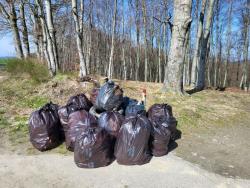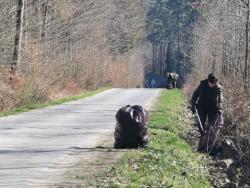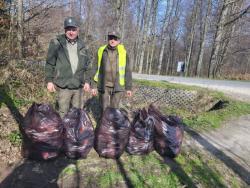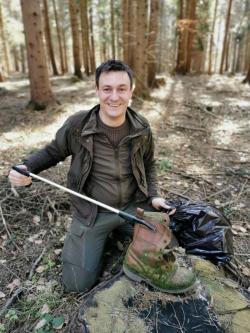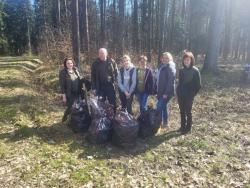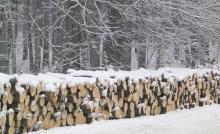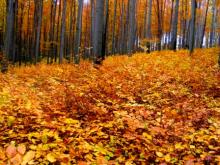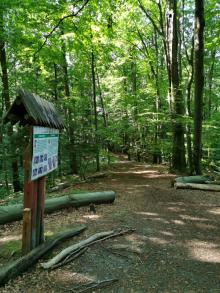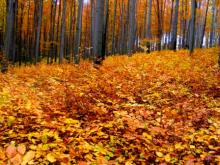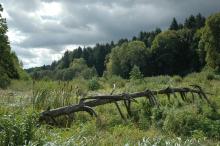 Asset Publisher
Asset Publisher
Polish forests
Poland is in the European lead, while concerning the area of all forests. They cover about 29,2 % of the country territory, and grow within the area of 9,1 million hectares. The overwhelming majority of the forests is state owned, of which almost 7,6 million hectares are managed by the State Forests National Forest Holding..
The number of Polish forest is still growing. The forestation rate of the country has increased from 21 % in 1945 to 29,2 % at the moment. Between 1995 and 2008, the forest area increased by 310 thousand ha. The basis for afforestation works is the "National Programme for Increasing the Forest Cover" (KPZL), assuming an increase of the forestation rate up to 30 % by 2020 and up to 33 % by 2050. Polish forests abound in flora, fauna and fungi. 65 % of the total number of animal species live there.
The forests grow in our country on poor soils, mainly because of the development of the agriculture in previous years. It influences the distribution of the types of the forest sites in Poland. Over 55 % of the forest areas is covered with coniferous forests. In other areas, there are forest sites, mainly the mixed ones. Their small part constitute alder and riparian forests – not more than 3 %.
In the years 1945 – 2011 the area of natural deciduous tree stands within the area of the State Forests National Forest Holding increased from 13 to 28,2 %.
Within the lowlands and uplands the most often occurring tee species is pine. It covers 64,3 % of the forest area of the State Forests National Forest Holding and 57,7 % of private and commune forests. In the mountains the predominant species is European spruce ( in the west) and European spruce with beech (in the east). Domination of pine is the result of carrying on sustainable forest management in the past. Once, the monocultures (crops or cultivations of one species) were the answer to the great demand of industry for wood. Such forests appeared to be quite fragile to climatic factors. They also were often the prey of pests' expansion.
In Polish forests, the share of other tree species, especially deciduous trees have been systematically increasing. The foresters have stepped aside from monocultures – that is why, they try to fit specific species of the forest stand to the natural stand, that would be proper for the given area. Thanks to that, in the years 1945 – 2011, the area of the deciduous tree stands within the lands of the State Forests National Forest Holding increased from 13 to 28,2 %. There occur more and more frequently the following tree species: oaks, ashes, maples, sycamore maples, elms, but also birches, beeches, alders, poplars, hornbeams, aspens, tilias and willows.
Our forests are the most often represented by the forest stands aged 40 to 80 years. The average age of the forest equals 60 years. More and more trees are of big size at the age over 80 years. Since the end of the Second World War, the forests' area has increased up to almost 1,85 million hectares.
Raport o stanie lasów w Polsce 2012
 Asset Publisher
Asset Publisher
Wiosenne porządki
Wiosenne porządki
Akcja sprzątania lasu
Obchodzony 21 marca Międzynarodowy Dzień Lasów zaakcentowaliśmy akcją sprzątania lasu działając tym razem na rzecz poprawy czystości naszych lasów. Pracownicy Nadleśnictwa Strzyżów wyposażeni w worki, rękawiczki i chwytaki zbierali śmieci w ośmiu wybranych wcześniej miejscach na terenie całego Nadleśnictwa. Wydarzenie miało charakter otwarty, tzn. okoliczni mieszkańcy mogli dołączyć się do akcji przychodząc w tym dniu w umówione miejsce zbiórki na wskazaną godzinę. W akcję włączyła się tylko młodzież z liceum w Strzyżowie. Idąc lasem, wzdłuż dróg prowadzących przez las oraz w sąsiedztwie wiat turystycznych, zbieraliśmy śmieci, których skala i różnorodność porażają. Dominują szklane butelki, puszki, opakowania po posiłkach na wynos, butelki typu PET, materiały higieniczne, a także części samochodowe, słoiki, odzież, zabawki, odpady poremontowe, opony czy spakowane do worków śmieci z gospodarstw domowych. Łącznie w wyniku sprzątania napełniliśmy 140 worków o pojemności 120 litrów oraz 20 worków 240 litrowych.
Jednym z zadań leśników, z zakresu ochrony lasu, jest dbanie o czystość na obszarach leśnych. Apelujemy w mediach o zachowanie porządku, ustawiamy tablice informujące o zakazie śmiecenia, edukujemy dzieci, młodzież i dorosłych. Do naszych codziennych obowiązków należy utrzymywanie w czystości obiektów tursytyczno-edukacyjnych, opróżnianie koszy tam ustawionych, zbieranie śmieci porzuconych w lesie, w rowach, likwidowanie dzikich wysypisk oraz szukanie sprawców zaśmiecenia. Reagujemy również na wpływające do nas informacje od mieszkańców, instytucji czy innych podmiotów lokalizując miejsca zanieczyszczenia i starając się odnaleźć osoby za to odpowiedzialne. Jest to trudne z uwagi na fakt, że rzadko udaje się złapać kogoś za rękę. Z pomocą w wykrywaniu sprawców zaśmiecenia przychodzą nowe technologie, np. fotopułapki zawieszone na drzewach.
W wielu naszych działaniach w leśnictwie korzystamy ze zdobyczy techniki współczesnego świata. Jednak nawet najnowocześniejsze technologie i innowacyjne rozwiązania nie zmienią ludzkich negatywnych postaw czy braku kultury osobistej, których wynikiem jest zaśmiecenie otaczającego nas środowiska. Sprzątając lasy nieustannie towarzyszy nam niezrozumienie tego zjawiska – zaśmiecania otaczającej nas przyrody. Liczymy, że takie akcje jak wczorajsza, oprócz wymiernego efektu w postaci czystszego lasu, będą też miały oddźwięk społeczny i wpłynął na świadomość osób korzystających z lasów zmieniając w przyszłości ich zachowanie.


 fot. Paweł Fabijański
fot. Paweł Fabijański
 fot. Paweł Fabijański
fot. Paweł Fabijański
 fot. Paweł Fabijański
fot. Paweł Fabijański

